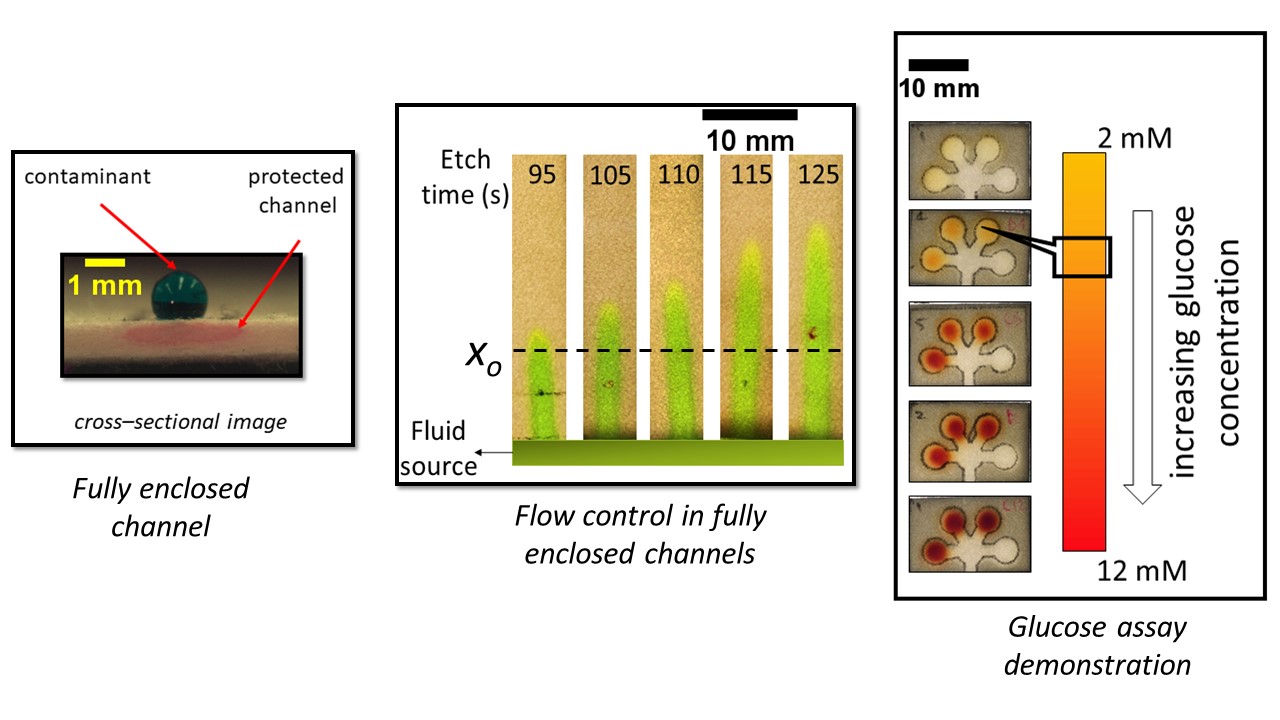(88h) Microfluidic Paper-Based Analytical Devices Using Plasma Processes
AIChE Annual Meeting
2020
2020 Virtual AIChE Annual Meeting
Topical Conference: Sensors
Student Competition in Bio-Sensors
Monday, November 16, 2020 - 9:45am to 10:00am
Microfluidic paper-based analytical devices (μ-PAD) have shown considerable promise to meet the ASSURED criteria set by the WHO. Paper has been patterned using various fabrication methods to allow distribution of liquid samples to targeted locations where subsequent reactions with reagents deposited in the paper are performed. These reactions develop color signals that can then be read using a smartphone. Low cost, portability, and the absence of external power source requirements make these devices desirable for POTC in less developed areas. It has been more than a decade since the first μ-PAD was invented. Yet these μ-PADs are not yet commercialized because of multiple technical problems including 1) contamination and evaporation of samples because of the lack of proper μ-PAD packaging, 2) inability to carry out complex tests that require multiple reagent additions, and 3) loss of sample in flow channels.
To address the issue of contamination and evaporation, a fully enclosed paper microfluidic device has been fabricated using pentafluoroethane (PFE) plasma deposition followed by O2 plasma etching. Structures with one and two non-interacting, fully enclosed hydrophilic channels were generated in a single paper sheet using metal masks. Furthermore, by performing an additional O2 plasma step with a secondary mask, pinholes were created at the reaction zones for reagent loading. Finally, to demonstrate the functionality of the device, a glucose assay was performed. Quantitative analysis of glucose assays showed that the device can be used for clinically relevant range of glucose. To our knowledge, this is the first time that such structures have been fabricated without paper stacking. Multi-layer devices have enhanced functionality relative to a single channel device, because the design space for creating networks of channels within the paper substrate is greatly expanded. The fluid-filled channels in the fabricated device are isolated, thereby preventing contamination due to handling and environmental exposure. Fluid evaporation can be inhibited by sealing the device with adhesive tape without contaminating the enclosed channels hence preventing loss of sample due to evaporation; a critical factor while working with precious samples.
To address the challenge of fluid flow control in μ-PADs, we extended our work on fully enclosed channel fabrication inside paper substrates to incorporate flow control functionality into the channels. Using pentafluoroethane plasma deposition and subsequent O2 plasma etching with metal masks, fully enclosed hydrophilic channels with varying wettability were designed and fabricated to precisely control fluid flow in μ-PADs. Flow control is one of the most critical functionalities in μ-PADs because it allows controlled implementation of multiple sequential reactions on a single device with minimal user interference. Potential benefits of flow control include improved limit of detection, ability to carry out complex diagnostic tests, reduced assay time, and decreased likelihood of human error. We studied the effect of controlled fluorocarbon removal on the surface of cellulose fibers on channel wettability and demonstrated that this behavior can be exploited to significantly vary the fluid velocity in the flow channels. Furthermore, by simply covering the flow channels with adhesive tape, we demonstrated that the effect of evaporation on the fluid flow can be significantly decreased. Finally, a device with three channels converging to a single reaction zone was fabricated and sequential delivery of fluid to the reaction zone was demonstrated. The devices made by the methods described in this paper offer significant benefits for in-field diagnostic testing where multistep protocols are required.
A device fabricated by this method is estimated to cost between 10 and 50 ¢ and the plasma processes used to fabricate these devices are compatible with roll-to-roll technology, making it suitable for large scale production. This alternative fabrication approach contributes significantly toward commercialization of low-cost µ-PADs that meet the WHO ASSURED criteria.
